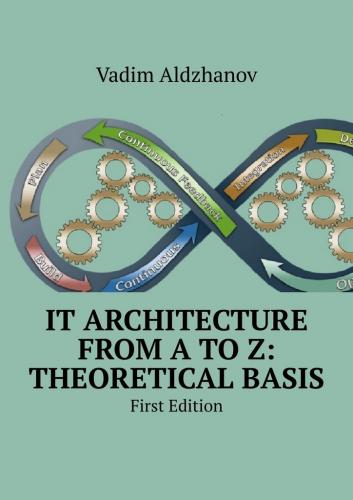A business orientation defines whether a methodology focused on using technology to increase business value, where business value defined as cost reduction or revenue increase.
The management guide defines the degree of methodology usefulness in understanding and creating an effective management model for an enterprise architecture.
The partitioning guide defines the usefulness of the methodology in effective partitioning the enterprise into departments, which is very important in managing complexity.
The availability of the catalog defines the efficiency of the methodology to create a catalog of architectural assets to be used in the future.
Neutrality towards service providers defines the likelihood of being tied to a specific consulting organization when implementing a methodology. A high rating means a low degree of attachment to a particular organization.
The availability of information defines the quantity and quality of free or relatively inexpensive materials on this methodology.
The time of recouping investments defines the duration of your using this methodology before you can build high business value solutions on its basis.
Enterprise Architecture can be built using various methods and practices. This book briefly discusses some of them and focus on one of them:
•“Zahman Framework” is the earliest and most well-known methodology. It is ideal to “classify” architectural elements.
•“TOGAF (The Open Group Architecture Framework)”, designed for “building processes” is widely known and spread, largely due to its openness.
•“Gartner” is a methodology for expert analysis by using “best practices”.
•“FEAF” is an architecture building methodology using the “service oriented” approach.
When building an IT Enterprise Architecture, one should highlight the following states of the organization’s architecture:
• “As-is” or “Baseline Architecture”;
• “Transition Architecture”;
• “To-be” or “Target Architecture”;
• “Enterprise Architecture Management Plan & Roadmap”.
In general, the Enterprise Architecture represents a transition plan from the “Ongoing” to the “Future” state of the organization. The architectural project lasts for several years and initiates many IT projects. These projects will have different duration, different start and end dates. They need to be grouped so that changes in business and IT would take place at the right time, with minimal risk and no compatibility issues. Therefore, architecture can transit from one operational state to another several times as an architectural project lasts. The intermediate state is called the Transition Architecture.
Enterprise Architecture using the Zachman Framework
The earliest methodology and in my opinion the most complete and structured is the Zachman Framework. It was originally developed as an Information Systems architecture. The main idea is to provide the possibility of a consistent description of system’s individual aspects in coordination with all the rest. The Zachman model is used to describe the enterprise as a whole, so the proposed model can be generally used as a means for describing architectures of any complex production system. The main characteristics of this model are:
• Integrity of the enterprise;
• discussing complex issues using a relatively small number of non-technical concepts;
• applicability for solving problems, i.e. the ability to work with abstractions and entities, highlighting and isolating individual system parameters without losing the perception of the enterprise as a whole;
• Simplicity of description.
The advantages of the Zachman model over others are:
• It is easy to understand for both technical and non-technical experts;
• It has more detailed descriptions of architecture components;
• It can be applied to planning and better decision making;
• It has the most visible representation of the company’s components.
• It describes complex architecture using a small number of non-technical terms;
• It has independent tools for specific description;
• It can be used as a tool for describing architectures of any complex production system.
Enterprise Architecture – Zachman Framework Matrix
Enterprise Architecture using “FEAF”
FEAF is a framework developed by the US government, as an approach for the development of information technology for Public agencies to use a single architecture. The FEAF is based on five reference models:
• Performance reference model;
• Business reference model;
• Service component reference model;
• Technical reference model.
• Data reference model.
One of the useful properties of the FEA framework is the principle of a segment approach, allowing accelerating the implementation of the Enterprise Architecture. The process of developing an enterprise architecture using the FEA methodology includes the following steps:
• Architecture analysis;
• Architectural definition;
• Investment and financing strategy;
• Program management and project implementation plan
Enterprise Architecture using “GARTNER”
Gartner Methodology can be described as a set of recommendations for creating an enterprise architecture. The 2002 Gartner model is designed in four related, interdependent, and increasingly complex levels:
• Business Relationship Grid;
• Business processes and business process styles;
• Templates;
• Technological building blocks (bricks).
Essentially the Gartner methodology is neither a methodology, such as a structured Zachman model, nor a process like TOGAF or FEA. Gartner is a set of practical recommendations. This methodology is a collection of tips for building enterprise architecture from one of the world’s most famous consulting IT companies. This framework is a three-dimensional cube consisting of following levels:
• Horizontal layers;
• Vertical domains;
• Vertical elements of technical architecture.
Enterprise Architecture using “TOGAF”
The main area for TOGAF application is the software infrastructure of the information system. It best suits for describing the integration components used to support a wide range of critical enterprise applications for business. The model can be described as:
• Business architecture overview;
• Description of the current system with the level of detail required;
• Identification and description of elementary architectural blocks to be used in the new architecture;
• Development of a draft technical report;
•
